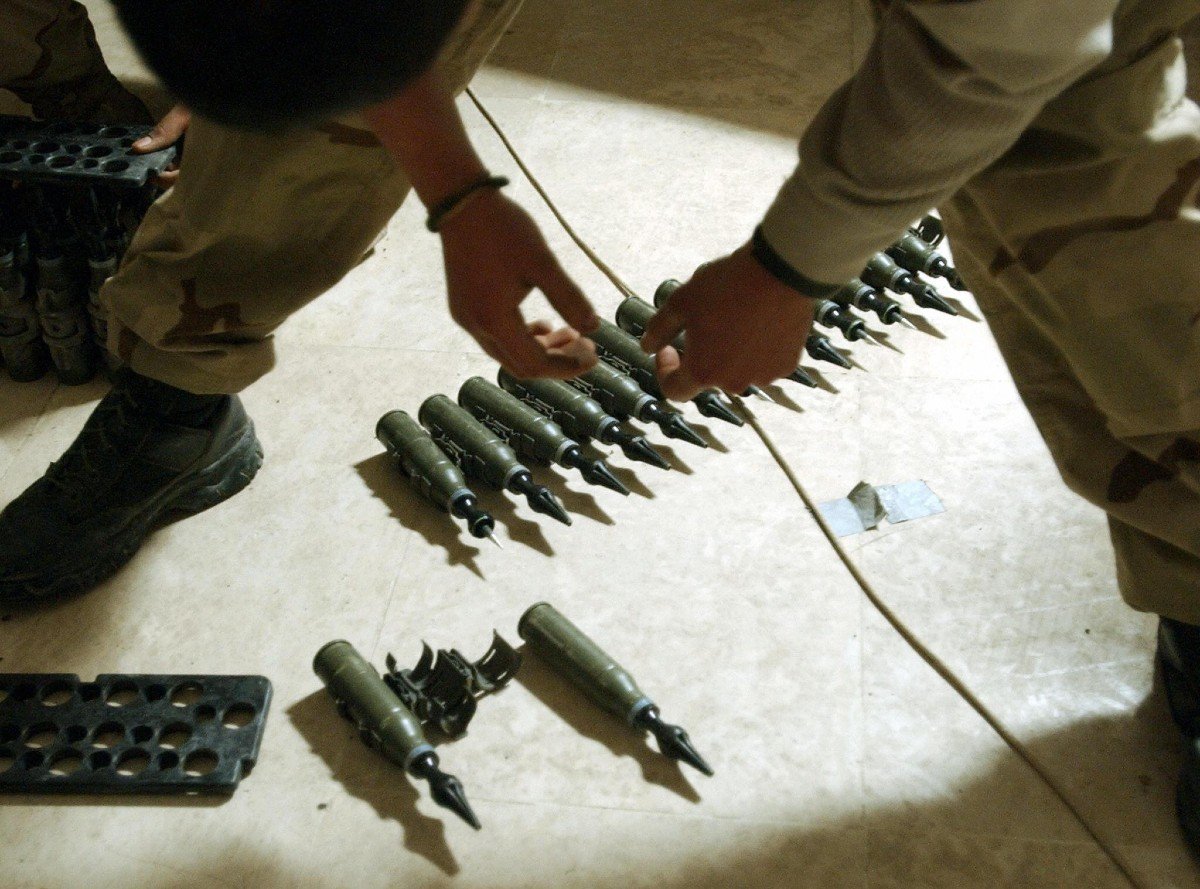The health effects of depleted uranium ammunition continue to be "a matter of hot debate" after the U.K. committed to sending the controversial munitions to Ukraine.
On March 20, Annabel Goldie, the U.K. minister of state for defense, confirmed that British Challenger 2 tanks donated to Ukraine would be sent along with depleted uranium (DU) munitions.
A spokesperson for the British defense ministry later said that the British armed forces have "used depleted uranium in [...] armor-piercing shells for decades." A spokesperson for the U.S. defense department also told The Associated Press that DU munitions remain a "longstanding element" of military stockpiles.
DU munitions, which are radioactive, are controversial despite their continued use by Western militaries, as well as production by countries such as Russia. DU rounds are very dense in order to penetrate the armor protecting enemy vehicles.
However, no definitive conclusions have yet been drawn on the environmental impacts of DU, or the effects it could have on the human body. Studies have largely concentrated on the impacts of DU munitions on military veterans, as well as civilians in areas of fighting during the Gulf War and Iraq War.

"The health hazard posed by DU continues to be a matter of hot debate," military technology expert David Hambling told Newsweek.
A British defense ministry spokesperson said that "independent research by scientists from groups such as the Royal Society has assessed that any impact to personal health and the environment from the use of depleted uranium munitions is likely to be low."
The Royal Society wrote in 2002 that any additional risks of a person developing deadly cancer from radiation after being internally exposed to military uses of DU "are likely to be undetectable above the general risk of dying from cancer over a normal lifetime."
The exceptions would be a "very small fraction" of soldiers, such as those who survive a strike on a vehicle by DU munitions, the Royal Society added.
Retired Colonel Hamish de Bretton-Gordon, who previously commanded U.K. and NATO chemical, biological, radiological and nuclear defense (CBRN) forces, told Newsweek that the "radiation is incredibly low."
"If you're in a vehicle that's hit by a depleted uranium round, the radiation is the least of your worries," he added.
The International Atomic Energy Agency (IAEA) has said that DU is "considerably less radioactive than natural uranium," and there is a risk of people developing cancer from exposure to radiation emitted by natural and depleted uranium.
However, there is a "lack of evidence for a definite cancer risk in studies over many decades" for depleted uranium munitions, the IAEA said. The agency said DU is "assumed to be potentially carcinogenic," but there is a lack of evidence for a "definite cancer risk."
People can be exposed to depleted uranium through inhalation, ingestion, and through the skin, according to the World Health Organization. When a DU round strikes a hard surface, it releases dust, which can "be a health hazard in some circumstances, the U.K. government previously said.
The health effects come down to the "physical and chemical nature" of the depleted uranium, as well as the quantity and for how long a person is exposed to DU, the WHO added in a study published in 2001.
DU munitions have been used by U.S. and U.K. forces for decades, and were common from the Gulf War through the conflicts in Iraq and Afghanistan.
However, there were "possible associations between exposure to depleted uranium and adverse health outcomes" for Iraqi citizens living in areas where DU munitions were used in the Gulf War and Iraq War, a 2021 study by the British Medical Journal found. More research was needed, the authors of the study added.
The U.S. Department of Veterans Affairs listed DU as a "potential health hazard if it enters the body," whether through inhalation, ingestion, embedded fragments or wounds.
The Campaign for Nuclear Disarmament, which opposes the use of DU munitions, has called for a "full, long-term and independent epidemiological study on all the locations where depleted uranium has been used."
"There have been a large number of studies detailing the very dangerous health and environmental impacts of the military use of depleted uranium, yet the U.K. and the U.S. refuse to openly acknowledge the risks," CND Chair Tom Unterrainer told Newsweek.
DU munitions produce "microscopic radioactive and chemically toxic particles that are distributed over the area surrounding the impact and which can then travel far and wide," Unterrainer said.
"It is these particles that produce long-term health and environmental effects," he added.
The "radioactivity is something of a red herring, as the real danger appears to lie in its toxicity as a heavy metal," Hambling argued. The WHO said that the "chemical toxicity" is considered alongside the "radiological" toxicity, with DU likely to target the kidneys and the lungs over other internal organs.
Uncommon Knowledge
Newsweek is committed to challenging conventional wisdom and finding connections in the search for common ground.
Newsweek is committed to challenging conventional wisdom and finding connections in the search for common ground.
About the writer
Ellie Cook is a Newsweek security and defense reporter based in London, U.K. Her work focuses largely on the Russia-Ukraine ... Read more
To read how Newsweek uses AI as a newsroom tool, Click here.








